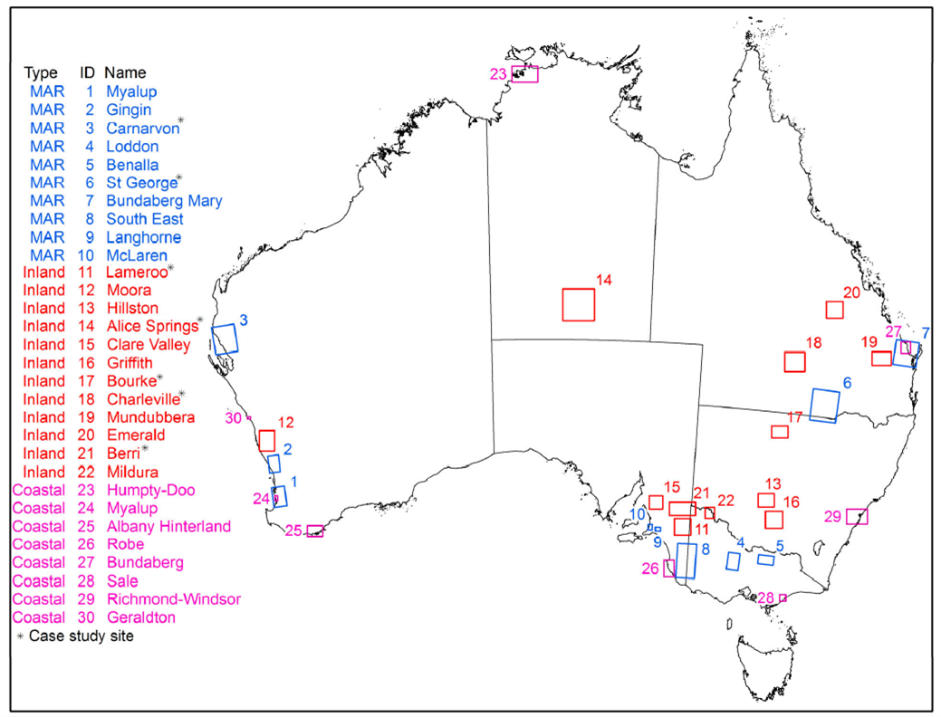Explainer: Why was Loxton chosen for a demonstration site desalinating brackish water?
news
Published 06 Aug 2024
The One Basin CRC is developing a demonstration site to assess challenges associated with using desalinated brackish groundwater for agriculture. Globally, only a small fraction (less than 2%) of desalinated water is used in agriculture, while 70% of the world’s freshwater resources are used for irrigation. Most desalination efforts focus on large-scale seawater desalination for municipal purposes. For example, many Australian capital cities constructed seawater desalination plants to boost dwindling drinking water supplies during the Millennium drought. This project shifts the focus to brackish groundwater, a largely untapped resource, particularly in inland regions. Previous studies by CSIRO have estimated a sustainable yield of over 2000 GL/year of brackish groundwater within the Murray-Darling Basin. Work by Barron et al. (2021) identified numerous sites across Australia that have potential to be suitable for agricultural brackish groundwater desalination. As shown in the figure, most of the identified locations fall within the Murray-Darling Basin.

Unlike desalination plants located on the coast, the brine produced during inland desalination cannot be discharged to the ocean. The most common inland desalination brine management solution is evaporation ponds, which concentrate salt on-site. In the Murray-Darling Basin, salt interception schemes use evaporation basins to intercept saline groundwater that would otherwise enter the river and redirect this water to regional-scale evaporation basins. While these salt interception schemes have the potential to support further development of inland desalination schemes, there are several technical and governance issues that would need to be resolved. A third brine disposal option is aquifer discharge. Here, the desalination brine discharge is redirected to a saline aquifer. For this approach to be environmentally acceptable, the salinity of the receiving aquifer should be equal to or greater than the salinity of the brine. Innovatively, aquifer disposal of brine is a major focus of the current project. After reviewing a range of sites in South Australia, the project zeroed in on the Loxton/Berri region for the demonstration site.
Globally, the Riverland in South Australia is a leader in irrigated agriculture, producing premium fruit, nuts and wine, with the region generating billions of dollars for the Australian economy annually. This location offers optimal conditions, including suitable hydrogeology, access to main transit corridors, and a focus on high-value irrigated horticulture.